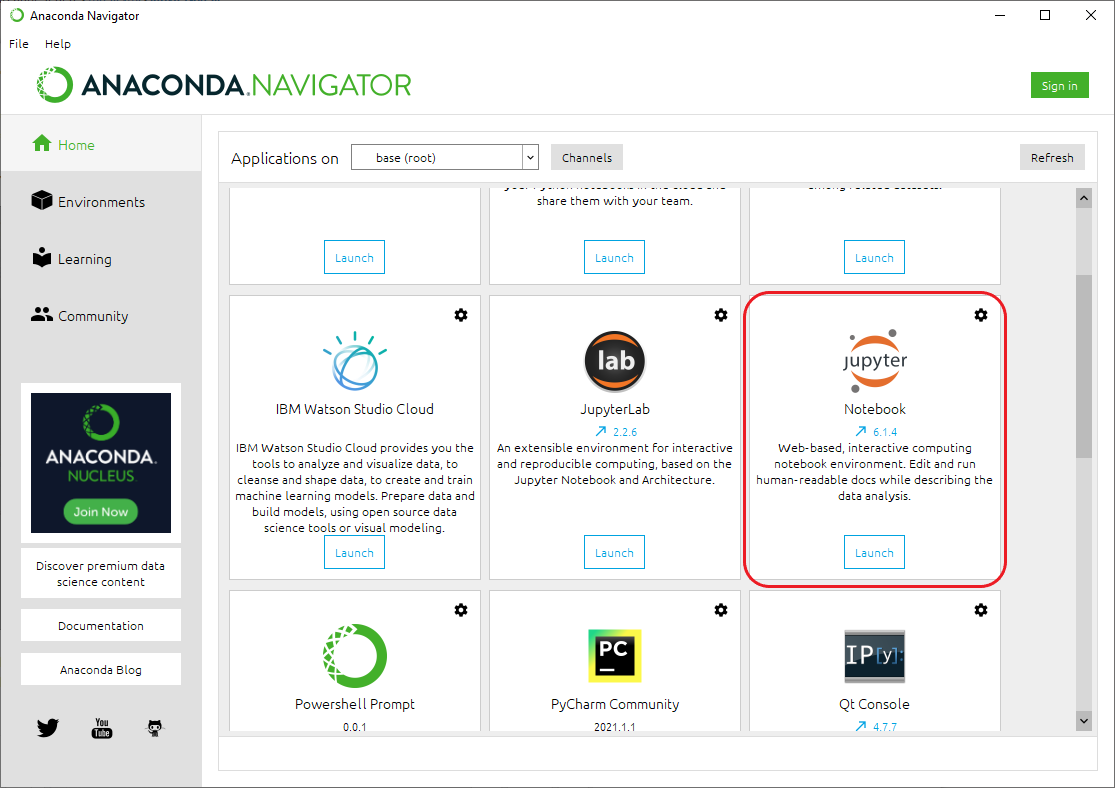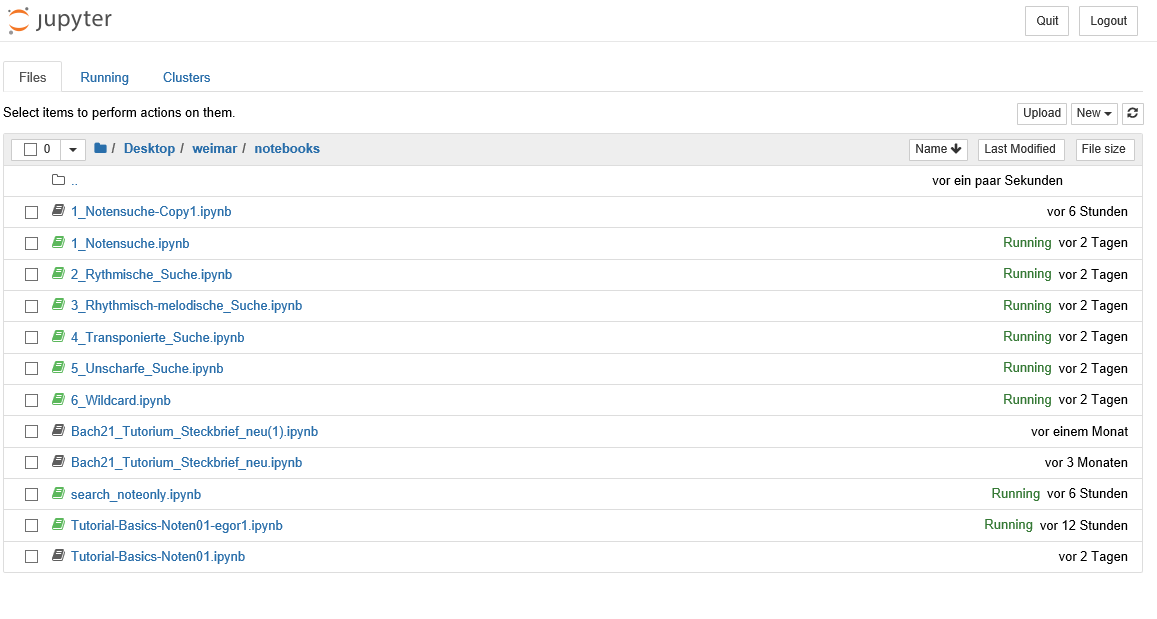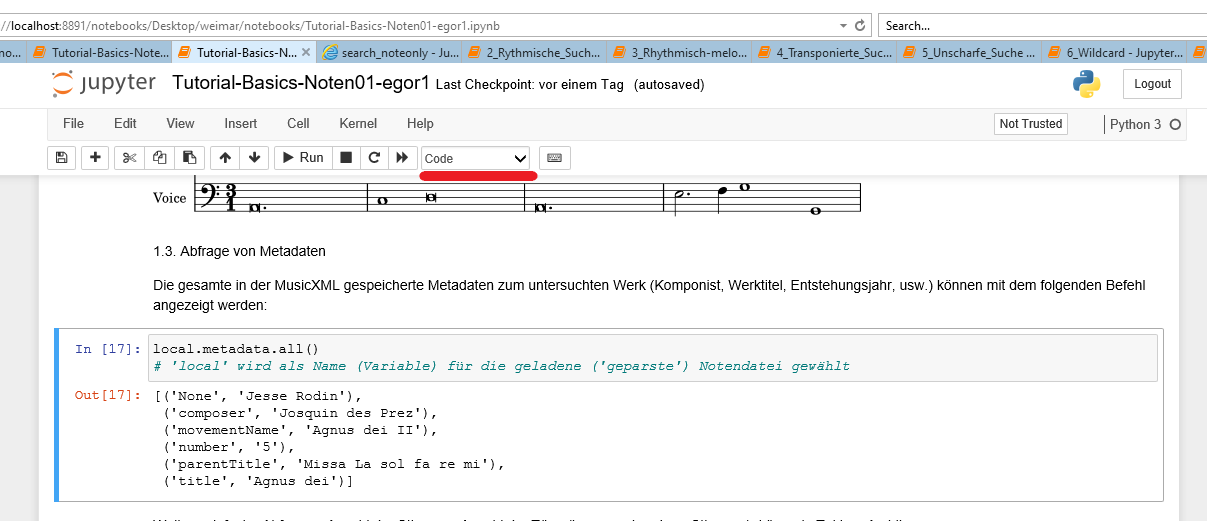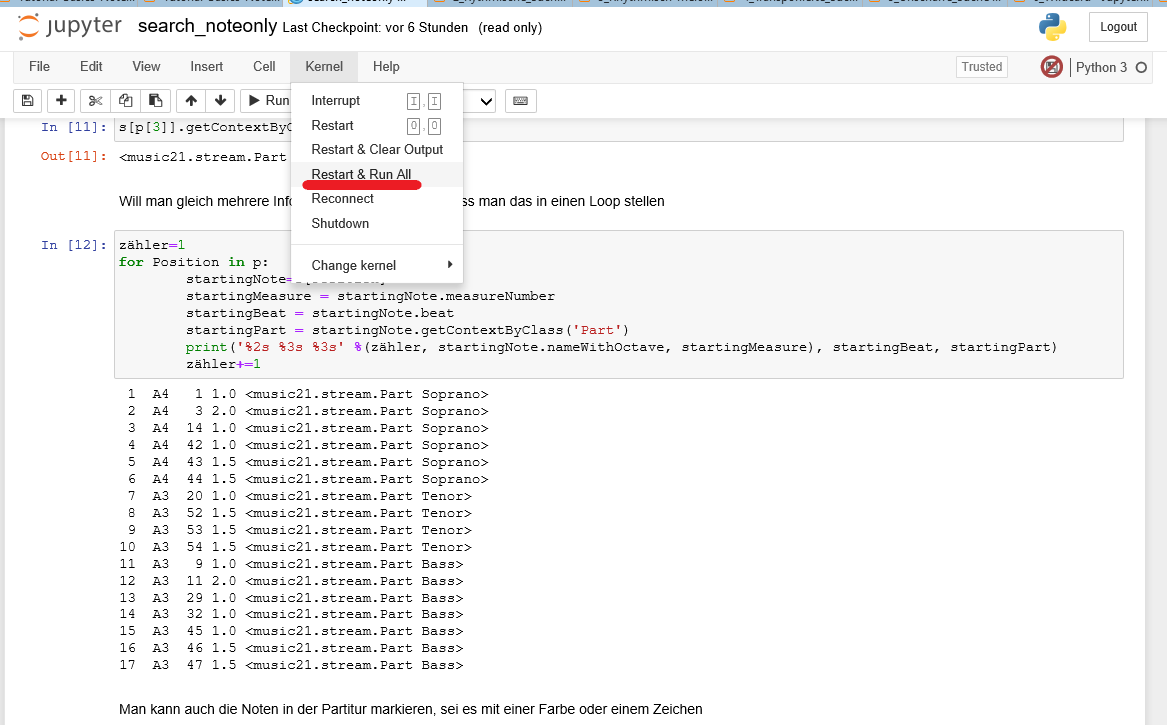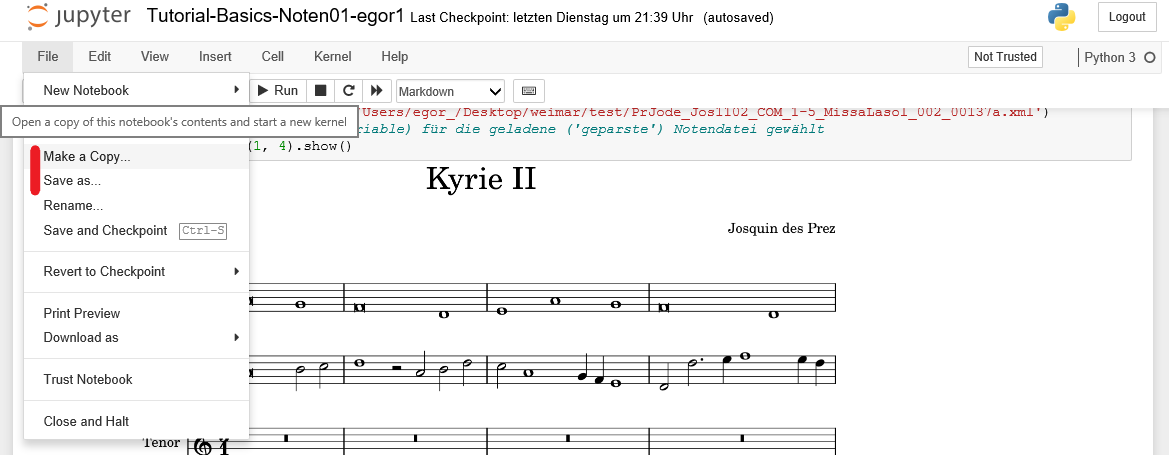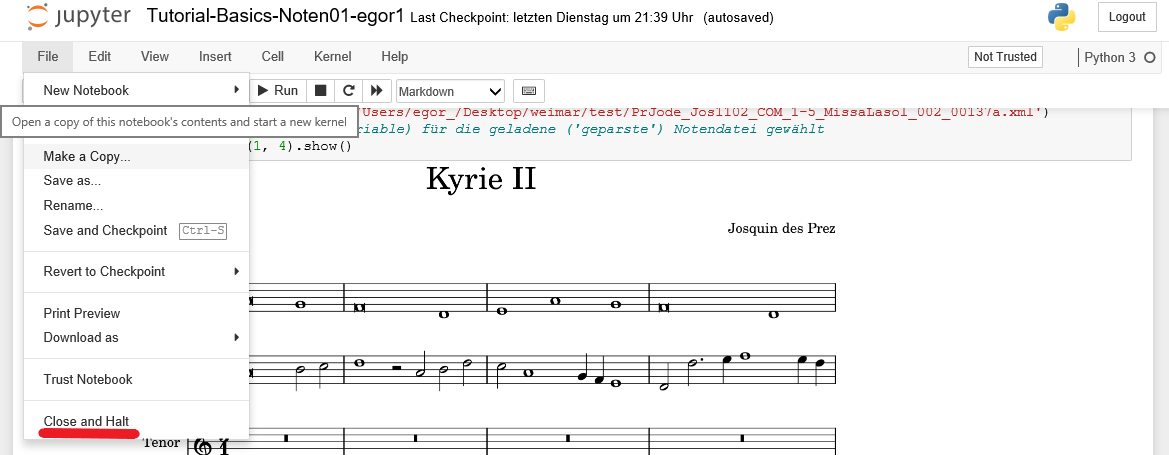Introduction Jupyter Notebook
A Jupyter Notebook can be started directly from Anaconda Navigator during an Anaconda installation:
For a Miniconda installation, a command window (Window Command, Power Shell, Annaconda Prompt etc.) must be opened to start the Jupyter notebooks and the command jupyter-notebook.exe must be entered.
On some Windows versions, there is a new icon Jupyter-Notebook (HfM_…) in the Start menu, which can be simply clicked. Jupyter-Notebooks will then open in Browser.
After the start a local data directory is automatically displayed in the browser. There the desired notebook can be selected. To do this, the corresponding file must first be saved in this data directory (right click → save target as).
In addition it is indicated whether a certain notebook is already opened (opened notebooks are indicated green):
The Jupyter notebooks are divided into sequential text and code cells. Based on the selected mode (marked red in the figure), you can see in each case whether the cell contains text (markdown mode) or Python code (code mode) can be executed:
Both Markdown cells and Code cells can be modified and edited by any user by pressing Enter within a block. For example, text comments can be added (Markdown) or changes can be made to the code. Own modified versions of the notebook can be saved locally under a new name (Menu: File → Save as), so that the original notebook remains unchanged.
The code in each cell can be executed with the Run button. During execution, an hourglass appears at the top of the browser tab. The code cells are usually executed in order (from top to bottom); the code cells are numbered consecutively (marked red in the figure):
If you want to run all the code cells one by one, select „Restart & Run all“ in the kernel column:
CAUTION: Given the large amount of data in score files, it sometimes takes quite a long time for a code command to execute. If you want to interrupt or cancel the execution, this is done via the menu item Kernel - Interrupt or -Shutdown.
In Jupyter notebook tutorials, the code is usually supplemented by detailed information placed behind a # sign. In this case, all lines after a # are not executed; this offers the possibility to add explanations to the code within the code cells, e.g. how to adapt the code to one's own needs - for example by loading a different file or by changing the bar or voice selection. The best way to do this is to use the Make a Copy or Save as functions in the File column:
A new cell is created using the + button or the Insert menu item and can then be set as a markdown or code cell.
The Save and Checkpoint function allows you to create a local snapshot so that you can conveniently try out different values/states of the notebook. When switching off the Jupyter notebook, the last created snapshot is usually saved as well.
If you want to stop working with the Jupyter notebook, select the Close and Halt option from the File column. This is necessary so that the Python kernel can also be terminated (when simply closing the tab, it will otherwise continue to run in the background).
